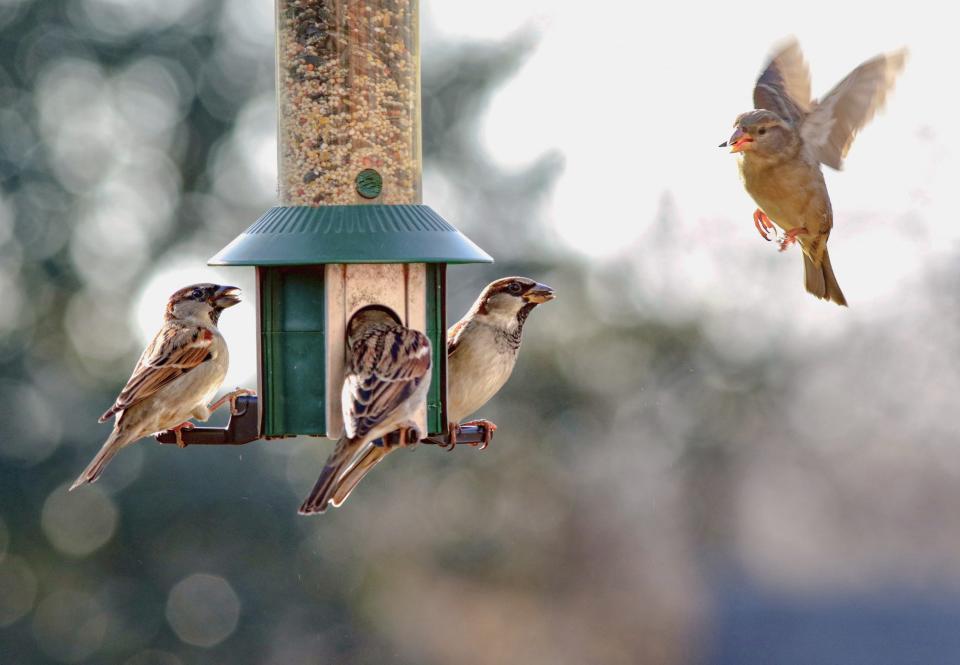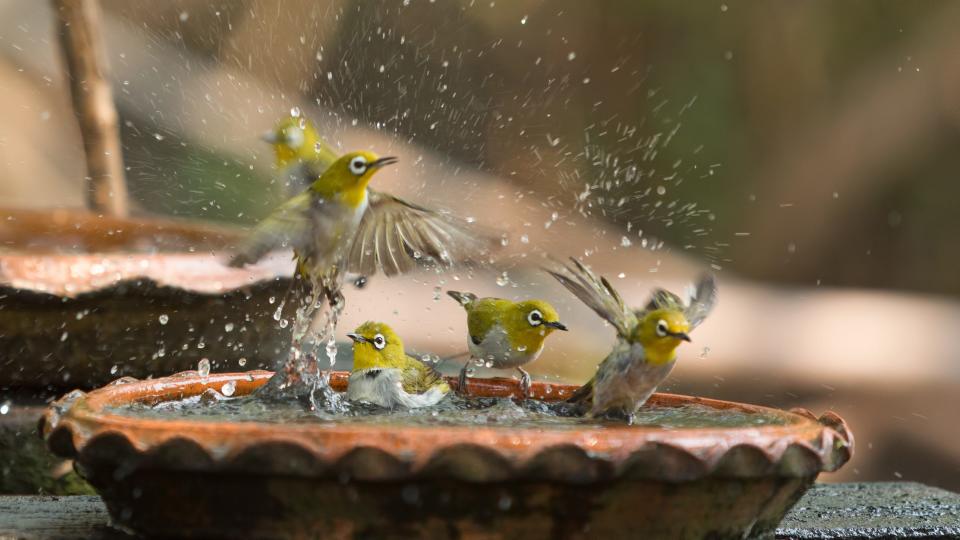Bird flu is spreading in a few states. Keeping your bird feeders clean can help
Concerns about bird flu have been on the rise since the U.S. Department of Agriculture (USDA) announced the discovery of infections in dairy cows in two states earlier this week.
The agency announced Monday that the presence of highly pathogenic avian influenza, more commonly known as bird flu, was found in unpasteurized milk samples from cattle at two Kansas dairy farms and one in Texas. The USDA, along with the Food and Drug Administration (FDA) and Centers for Disease Control and Prevention (CDC) are further investigating reports of sick cows in these states as well as New Mexico.
Following reports of dead birds found on farm property, further testing took place over the weekend, indicating that known infections thus far originated from wild birds, not domestic ones. The agencies have reaffirmed that the likelihood of transmission to humans remains low, with the FDA saying, "At this stage, there is no concern about the safety of the commercial milk supply or that this circumstance poses a risk to consumer health."
The CDC, which tracks instances of bird flu in animals and people across the U.S., has the current health risk listed as "low" with no sign of person-to-person spread.
As of April 28, only one case in humans has been reported.
The CDC has been tracking cases of bird flu in wild birds since January 2022. On March 13, it reported a total of 9,181 wild cases. Poultry cases have been tracked since February 8, 2022, and were last reported on March 20 at 82,048,716
These numbers aren't specifically concerning thanks to the safeguards we have in place, the agencies said. However, some experts have advised that people should consider looking into their own backyards to ensure they are not unintentionally contributing to the spread in the form of unkempt and neglected bird feeders and baths.
Here's what to know about keeping your birdy visitors' accommodations clean and safe.
What to know: Milk from sick dairy cattle in 2 states test positive for bird flu
Keep bird feeders clean

You don't have to give up your love of feeding and enjoying the presence of feathered friends because of potential infection. Illnesses like bird flu are hard for humans to catch and are not generally widespread in the U.S. There are some simple precautions you can take if you like to offer local birds a place to hang out in your yard.
Wildlife biologist Todd Schneider of the Georgia Department of Natural Resources said in a statement that bird flu is not the only illness that feeders and bird baths may spread. Salmonellosis, fungal issues such as aspergillosis and avian pox can also be concerns.
To combat the likelihood of these things, Schneider suggested:
Clean feeders weekly using a 10-percent bleach solution – one part bleach to nine parts water – and rinse them thoroughly. After washing, let the feeders dry completely. Wear protective gloves while cleaning and wash your hands carefully afterward.
Rake up bird seed, hulls and fecal matter beneath feeders two or more times a week. Wear a mask to avoid inhaling fungal spores stirred up by raking.
If you have multiple feeders, space them out to help limit gatherings of birds.
Move feeders regularly. A move as few as 20 feet away lowers the risk of disease transmission.
Bird baths and birdkeeping

Bird feeders are not the only potential source of illness amongst your avian visitors. Birdbaths, houses and other structures should be kept similarly clean and maintained to curb potential infection or spread of avian illness.
If you have birdbaths:
Change the water every two to three days to avoid algae buildup and stop mosquitoes from breeding.
Sweep up and throw away droppings from around the base of the birdbath.
Remove wet feed, seeds and other remnants left behind from the area around the bath regularly.
Likewise, hobbyists who keep birds on their property, such as chickens, should keep their domestic animals safe and separate from potentially infected wild animals.
If you keep chickens or other birds on your property:
Provide ample enclosures and security to ensure your domestic birds do not come in contact with wild birds and other animals.
Avoid unprotected contact with domestic birds (poultry) that look sick or have died.
Do not touch surfaces that may be contaminated with saliva, mucous, or feces from wild or domestic birds.
If you must interact with a sick bird who is a member of your flock, take the following precautions:
Use protective equipment like gloves, an N95 respirator if available or, if not available, a well-fitting facemask (e.g., a surgical mask), and eye protection.
Wash your hands with soap and water after touching birds.
Avoid touching your mouth, nose, or eyes after contact with birds or surfaces that may be contaminated with saliva, mucous, or feces from wild or domestic birds.
Change your clothes before contact with healthy domestic poultry and handling wild birds, captive wild birds, farmed birds, and other pet birds. Then, throw away the gloves and facemask, and wash your hands with soap and water.
PETA appeals to the Bidens: PETA tells WH, Jill Biden annual Easter Egg Roll can still be 'egg-citing' with potatoes
What is bird flu?
Bird flu, also called avian flu, is a contagious infection that spreads among wild birds worldwide and can infect domestic poultry and other animal species. The virus does not usually spread to humans but sporadic infections have been reported. There are several strains all belonging to influenza A-type viruses.
The most common subtypes that may affect humans are A(H5N1), A(H7N9) and A(H9N2), according to the Cleveland Clinic. In humans, symptoms can resemble a typical flu but may advance into more serious respiratory symptoms.
Symptoms in people can include:
Fever of 100 degrees Fahrenheit or higher.
Cough.
Body and muscle aches.
Sore throat.
Nausea and vomiting.
Diarrhea.
Stuffy or runny nose.
Pink eye (conjunctivitis).
Shortness of breath (dyspnea).
Pneumonia.
Acute respiratory distress.
Respiratory failure.
In birds, symptoms can include:
Loss of appetite and lethargy.
Death without prior symptoms.
Eyelid swelling or red, crusty eyes.
Twisting of the head and neck.
Purple discoloration to body parts, including legs.
Protecting yourself
While bird flu infections are uncommon and unlikely, there are some basic precautions to keep in mind. According to the CDC:
Avoid direct contact with wild birds and observe them only from a distance, if possible.
Avoid contact with wild or domestic birds that appear ill or have died and call to report sick or dead birds.
It is safe to eat properly handled and cooked poultry in the United States. Properly handling and cooking poultry and eggs to an internal temperature of 165?F kills bacteria and viruses, including bird flu viruses.
Seasonal flu vaccination will not prevent infection with bird flu viruses but can reduce the risk of getting sick with human and bird flu viruses at the same time.
People who become sick within 10 days of exposure to infected birds should isolate at home until they are proven not to have bird flu virus infection and have recovered from their illness. The local or state public health department should be notified and can assist in monitoring and advising when isolation is no longer required.
This article originally appeared on USA TODAY: As avian flu cases rise, cleaning bird feeders can help stop spread
